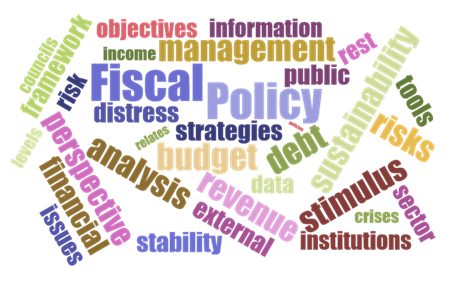
Debt Sustainability Framework for Low Income Countries (LIC DSFx)
Deadline passed
Session No.: OL 23.156
Location: Course conducted online
Date: May 1, 2023 - April 15, 2024 (50 weeks)
Delivery Method: Online Training
Primary Language: French
Target Audience
All government officials are welcome to register. This course is particularly useful for officials from ministries of finance, debt agencies, central banks, and other government agencies responsible for providing advice or implementing macroeconomic and debt policies.
Qualifications
Some knowledge of economics is helpful. Basic Microsoft Excel skills and access to a computer with a reliable internet connection and a Google Chrome web browser are essential.
Course Description
This online course, presented jointly by the Institute for Capacity Development and the Strategy, Policy, and Review Department, in collaboration with the World Bank, provides an overview of the World Bank–IMF Debt Sustainability Framework for Low Income Countries (LIC DSF).
The LIC DSF was developed by the IMF and the World Bank (WB) to help low-income countries achieve their development goals while minimizing the risk of debt distress. This one-module course will allow participants to understand the LIC DSF, and thus interpret the LIC DSF outputs presented in WB and IMF reports. The course walks through the steps involved in applying the LIC DSF. First, we identify data requirements and the “realism tools” used for assessing the plausibility of macroeconomic projections. Next, the course addresses how the LIC DSF computes a country’s debt-carrying capacity, which is used for determining thresholds for the debt-burden indicators. When a debt-burden indicator breaches its threshold under either the baseline or stress test scenarios, this signals risk of debt distress. The course concludes by exploring how judgment can be used to arrive at a final risk rating.
Course Objectives
Upon completion of this course, participants should be able to:
- Identify data requirements for the use of the LIC DSF template.
- Identify the steps in the production of risk ratings for low-income countries.
- Understand the LIC DSF realism tools.
- Interpret the LIC DSF stress test scenarios.
- Identify how the LIC DSF computes thresholds for debt-burden indicators.
- Understand the LIC DSF risk ratings
- Interpret the outputs of the debt sustainability analysis for low income countries, as presented in WB and IMF reports.
Financial Crisis Management (FCM)
English | September 16-26, 2024 | In-person Training | Vienna, Austria
Apply online by June 30, 2024
Gender Inequality and Macroeconomics (GM)
English | September 8-12, 2024 | In-person Training | Kuwait City, Kuwait
Apply online by June 30, 2024
Climate in Macroeconomic Framework (CMF)
English | October 14-18, 2024 | In-person Training | Singapore, Singapore
Apply online by July 1, 2024
IFRS 9 - A Supervisory Perspective
English | August 26-30, 2024 | In-person Training | Thimphu, Bhutan
Apply online by July 1, 2024
Projecting Public Debt and Fiscal Adjustment Paths (DDT Tool) (PPDFAP)
English (Arabic) | September 8-12, 2024 | In-person Training | Kuwait City, Kuwait
Apply online by July 4, 2024


